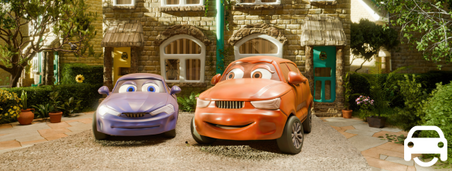Your Drive To Work in 2030 Will Be Like This

Here’s a news flash – in 2030 we will NOT have flying cars. You probably already knew that, though 12-year old me from 1980 is gutted.
Back down to earth, what might surprise you is that fully autonomous vehicles (cars that always drive themselves) will also NOT exist. Most experts agree we’re still decades away from having the level of artificial intelligence (AI) required to completely do away with human intervention.
Electric cars will be around in far greater numbers (at present only 2% of cars are EVs) as the high purchase costs start to ease and drop below petrol and diesel cars. That’s predicted for the second half of this decade, thanks to economies of scale and cheaper battery production.
Don’t discount other alternative fuel technology, such as hydrogen fuel cell, synthetic fuel or something else entirely. Nuclear diamond batteries anyone? Oh yeah, that could be a thing!
Petrol stations will still be around as conventional ICE (internal combustion engine) cars continue to coexist alongside EVs at least until 2040. With over 40 million cars out there and new car sales at around 2 million as a typical annual average, it will take about 20 years to replace them all.
But what will your car and driving experience be like in 2030? Let’s imagine...
You’re late as you rush outside, having already called up the car (either your own or from a car-sharing subscription service) on your 7G translucent smartphone and confirmed your destination. Using pre-programmed knowledge, the vehicle has already left its nearby parking spot to meet you.
It’s a sunny day so the panoramic glass roof darkens as the climate control sets to your desired temperature. The roof also contains photovoltaic (PV) technology for solar charging to supplement power on the go. While it charged overnight, parked over a wireless charging pad, by morning it was passing additional energy captured from the sun, back into the national grid.
On-board cabin filtration systems have sanitised the interior. And the wheels and tyres have reconfigured to suit the driving conditions (micro compressors adjust tyre pressure and even the width of the wheel rim to vary the amount of rubber in contact with the tarmac. Electrically conductive rubber compounds monitor for temperature and any damage or loss in pressure.
Back in the car, all the controls, seat and steering wheels adjustments, as well as the infotainment and destination have been preset for you, although the exact route is being updated live with data from traffic cameras, other vehicles and lamp poles (we already have street lights that monitor roads and air pollution). Virtually all cars are connected to the internet now.
Directions are holographically superimposed on the road ahead, think Tom Cruise’s BMW i8 in Mission Impossible 4, and the LCD-enabled windscreen also creates a virtual visor that moves automatically in relative position to the sun to shade your eyes. The side windows can be crystal clear or fully opaque for your privacy. In the case of commercial vehicles, such as vans and taxis, these would display advertising personalised for you.
As you start to drive, your music choice or favourite radio station is already dialled in and the biometric onboard detectors, in conjunction with your smartwatch, are ensuring you’re fit, well and focussed when driving. In the case of any medical emergency, the car would be able to pull over and summon the emergency services.
While not a fully driverless vehicle, there are enough semi-autonomous systems onboard (utilising lidar, cameras and a multitude of sensors as well as vehicle-to-vehicle communications) that on motorways and in heavy stop-go traffic, autopilot would be engaged. Driver monitoring ensures you remain awake and in control of the vehicle. Ultimate responsibility for any incidents still rests with you, as government legislators and insurance companies continue to wrestle with the culpabilities of AI-driven cars.
In addition to digital mirrors that give clearer and wider fields of view (though unlike today’s versions, also provide a 3D depth of field, and automatically refocus to suit your eyesight) there are also holographic feeds for reversing and under-floor views to the front and sides.
You can call these up, as with all the other features on board, either by voice or gesture control – again, Tom Cruise in Minority Report but without the gloves. And on your return journey that evening, advanced adaptive lights will illuminate the way aided not only by the lidar but infrared and thermal imaging, revealing obstacles much further ahead.
Plus, you need not feel lonely. Remember KITT in Knight Rider? While AI may not be up to driving, there are already chatbots good enough to converse with. On that boring drive home, you can have deep discussions about the ethical rights of AI with your own version of Tony Stark’s Jarvis. Just don’t upset it. It controls everything in your car. Remember Hal 9000? Eek!








